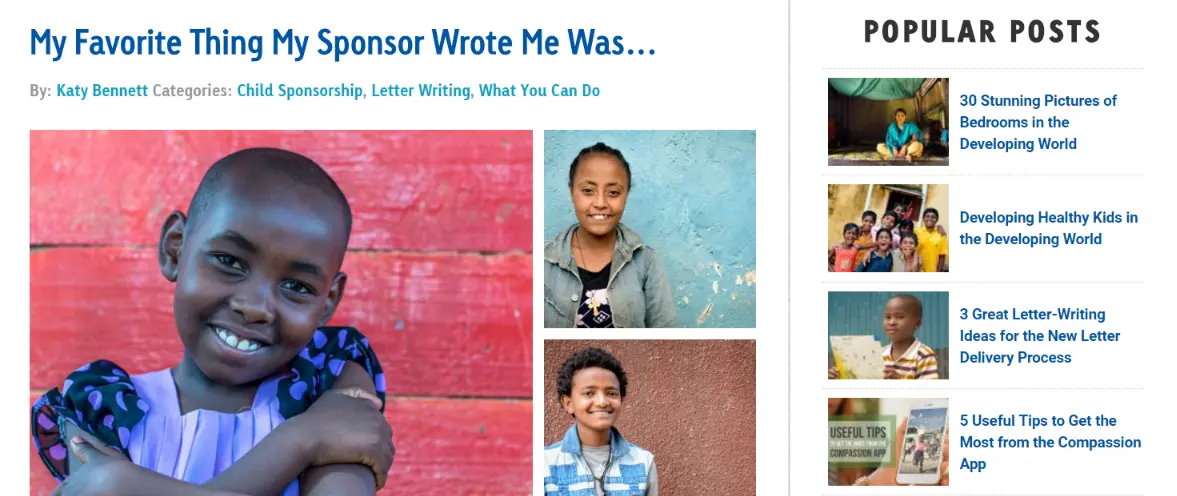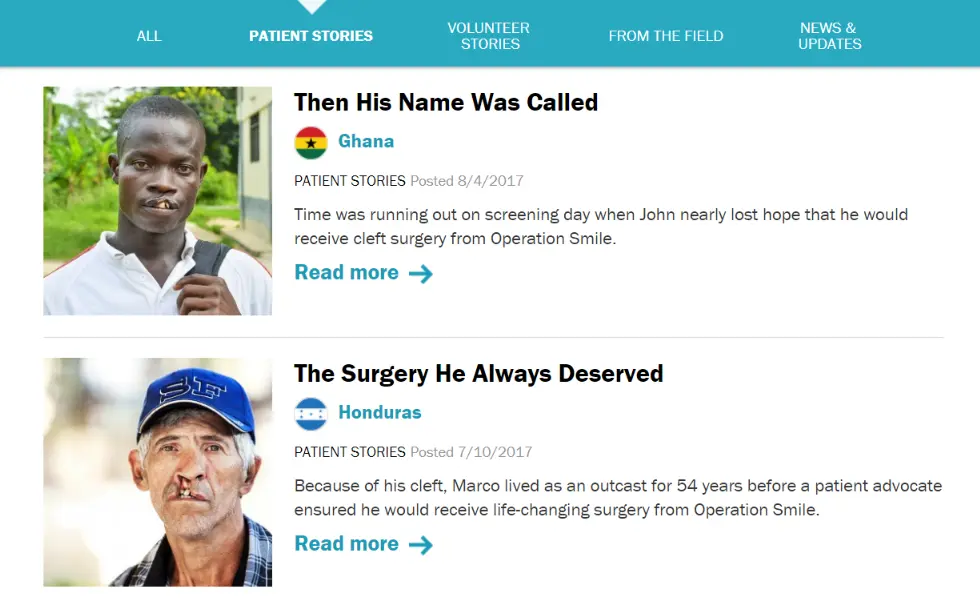You might have noticed that we feel pretty strongly about blogs here at Wired Impact. Whether we’re talking about website structures or driving website traffic, there’s a role for a blog to play in your nonprofit’s marketing. But even though blogs are a well-established tool these days, many organizations struggle with getting started or finding buy-in, which can lead to some common blogging mistakes.
I’ve taken three myths you might have heard at your nonprofit and broken them down to help you identify the root problem and how you can fix it. Plus, you’ll find inspiration and ideas from real nonprofits that do great work with their blogs — examples you can pass along to your team!
Let’s start busting some blogging myths.
Myth: We Don’t Have That Much to Say.
Are you worried that you don’t have enough interesting news to share? As long as you’re consistently working toward your mission, you definitely have something to talk about that’s blog-worthy. The key is to create content that addresses the needs of your constituents — not the minutiae of your organization’s inner workings.
The Mistake: Not thinking about your target audience. Your constituencies have different challenges and interests, which also means that there’s a wide range of content you could produce (or curate from other sources) to help them reach their goals and build your relationships with them.
How to Fix It: Have you created personas as part of your marketing plan? If not (or if it’s been awhile since you revisited them), get started with our persona development tips. From there, you’ll be able to brainstorm topics that help answer their frequently asked questions, define your work in relevant ways and help determine the sort of tone and perspective that will resonate. Imagine how great it will be to hear people tell you that your blog post “really spoke to me.”
Follow Their Lead:
- Compassion – This blog does an exceptional job tapping into the needs, goals and values of its core readers: donors. Look how they intertwine mission-focused posts with more general lifestyle information, encouragement, and a post that even addresses their audience’s vulnerabilities.
Need more inspiration? Use our 170 blog post ideas for nonprofits ›
Myth: No One Is Going to Read Our Blog.
The tricky part of this myth is that it’s partially based on truth. Simply publishing a post on your nonprofit’s blog doesn’t make much of an impact. If a nonprofit publishes a blog post and no one knows to read it, does it make a sound?
The Mistake: Forgetting about distribution. A great nonprofit blog serves multiple marketing purposes, like keeping your website up to date, attracting search traffic and providing email and social media content that drives visitors to your cause. If you’re not sharing your blog posts across different channels, why should others? How will people find it? And if you’re not thinking about search engine optimization, you might be ignoring people that don’t know your nonprofit by name but could be interested in what you have to say.
How to Fix It: First, make sure that your content is optimized for search using the basics. Second, share your posts! One of the easiest ways to increase blog traffic is taking a holistic look at your communications and re-purposing blog content in a variety of ways, like teasing it out in an email newsletter, posting an excerpt with a link on Facebook, or using it in a pitch to a journalist.
Follow Their Lead:
- Rails-to-Trails Conservancy – See how they took a nationally-focused blog post about viewing the solar eclipse and posted it on Facebook and Twitter, making sure to use a relevant hashtag and tagging related organizations to get more views and shares on a popular topic.
Myth: Blogging Takes Too Much Time.
I’m not going to lie, blogging does take some time and brainpower. But it’s well spent if you use your nonprofit’s blog to help meet your organization’s big picture goals: more donors, volunteers, members, event attendees and program participants.
The Mistake: Not planning for action, or not planning at all. Your blog is an excellent tool for building knowledge that leads to action, but it’s hard for readers to follow along when you’re inconsistent. When you don’t have a content strategy, you risk putting together posts that don’t lead your readers anywhere, especially not closer to you. Of all the common blogging mistakes, this one is the easiest to address in the shortest time frame.
How to Fix It: Create an editorial calendar for your blog. For each post, identify the next step that you’d like a reader to take, such as reading more about a program, donating to a special campaign or signing up to volunteer. And don’t forget to measure your blogging efforts using Google Analytics or similar tools. The only way to know that you’re not wasting your time is evaluating your blog to see what’s working, find areas that need improvement, and then adjust your course.
Follow Their Lead:
- American Rivers – This blog, called The Current, publishes posts that are packed with calls to action at the end of most of their posts, like this one with a Take Action button.
- Operation Smile – In addition to incredible storytelling, their blog posts also frame the organization’s mission and impact in different ways, like at the end of this post that’s part of a planned series highlighting their work in Honduras.
If these common blogging mistakes and myths sound familiar, don’t despair! We’ve written a lot about nonprofit blog best practices over the years and are happy to help get you on track to a blog that helps your organization reach its goals. As you sit down to plan your blog’s workflow, just remember to put your audience first, ask them to take action and then share away.
Are there other blogging myths out there that are hurting your success? What are some typical blog mistakes that you see nonprofits struggling with? We’d love to chat with you in the comments.
What You Should Do Now
01. Come to Nonprofit Website Office Hours
We cover a new topic every few weeks. Plus get a live answer to any website-related question you're wrestling with.
02. Book a Website Call
Find a time to discuss your nonprofit's website needs. Discover what's worked for other nonprofits like you and see how easy building your new site can be.
03. Start a Free Website Trial
Try our nonprofit website platform for yourself. Instantly get access to every feature to see if it's the right fit for your needs. No credit card required.




Hi Katy
Great list. I’d like to add one! ‘You write in block paragraphs and don’t reformat your post to emphasise certain messages’.
It’s true that people reading a post/article will skip through to find key messages. Why not make their life easier (and allow them to read efficiently) by making words bold, italic, using bullet points, increasing text font, in order to allow key points to emerge
Hi Shivam – Formatting is certainly an important part of writing effective blog posts. Thanks for commenting! For anyone looking for more formatting tips, we recommend our guide to nonprofit website content.
Hi,
Thank for this article. Somehow I feel like it’s addressing to me.
I wrote an article about 50 common blogging mistakes, but somehow what you said here opened up my mind more than all those mistakes I did in my previous blogs and what I researched about these days.
I’ll come back for more tips because I feel that you are offering valuable information.
Thank you
Cristina
Thanks for commenting, Cristina! We’re glad you found the post helpful. I’m looking forward to checking out your post on common blogging mistakes as well!